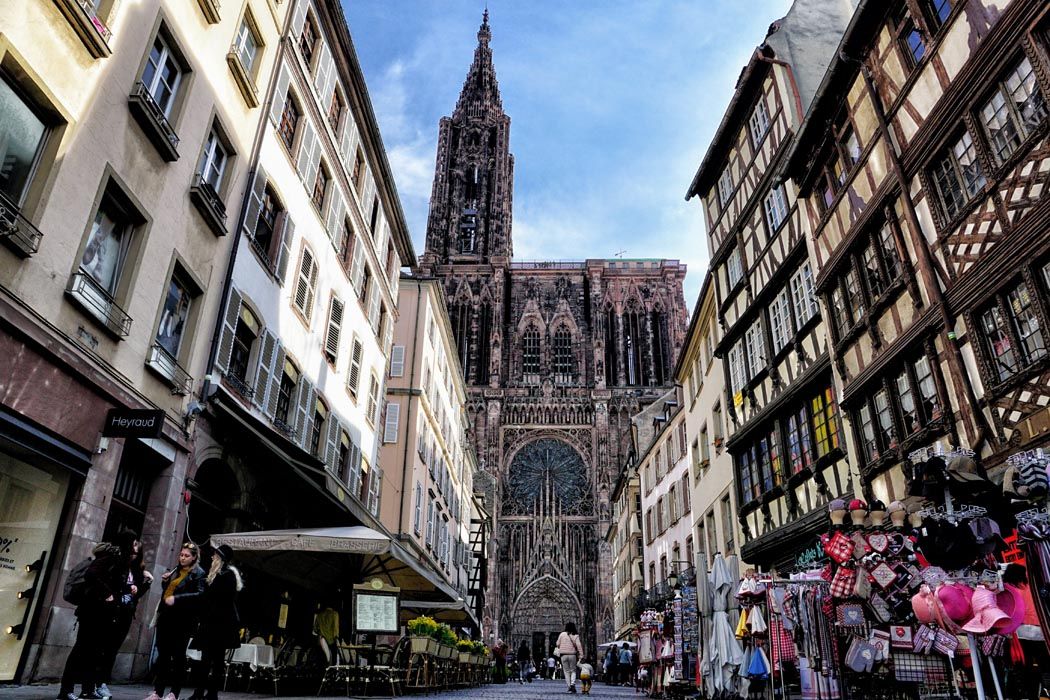On Strasbourg's Grande-Île, the Notre-Dame cathedral of Strasbourg stands like a beacon. "Prodigy of the gigantic and the delicate" according to Victor Hugo, this masterpiece of Gothic architecture impresses with its size, its flamboyance, its unique pink color... and its unique bell tower with delicate lace!
Let's discover the Lady of Strasbourg. She's Strasbourgeois' pride (myself included) and is a must-see stop if you're going to Strasbourg.
A little history about Notre-Dame de Strasbourg
Strasbourg's cathedral is an emblematic monument of the city, built on a site that was occupied by an important Roman camp when the city was called Argentoratum, and which has hosted many places of worship over the centuries. Construction of the present cathedral began around 1180 and was carried out by various master builders who added Gothic elements to a structure originally built in the Romanesque style.
In 1439, the octagonal spire of the cathedral was completed, becoming at that time with 142 meters of height the highest building in the world and this until 1874. During the 16th century, other important constructions, such as the astronomical clock, were added to the cathedral. Despite several fires and damage caused by the French Revolution, Strasbourg Cathedral has remained standing and is now a UNESCO World Heritage Site.
The building, once under Protestant worship (from 1527 to 1550 and then from 1561 to 1681), was returned to Catholic worship when Strasbourg joined the French kingdom of Louis XIV. In 1792, it became the "Temple of Reason" and 235 statues were destroyed. A phrygian cap in sheet metal was even placed on the spire of the building.
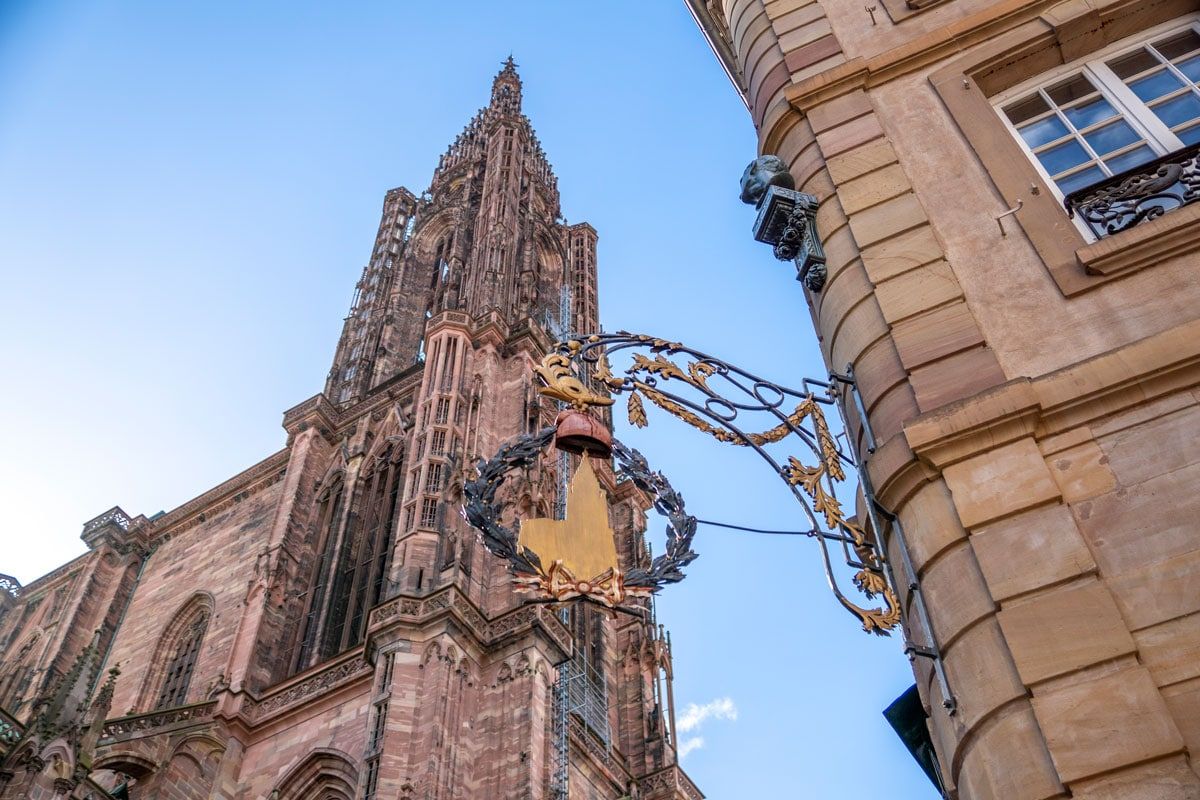
How to visit the cathedral of Strasbourg?
Your visit to the cathedral begins with the majestic pink sandstone facade. Its color is known to change slightly depending on the time of day and the quality of the light.
Thousands of ornate sculptures and figures decorate the western facade, known as one of the most elaborate in the world in terms of medieval decoration. Elaborate portals bordered by statuary and religious scenes catch the eye: take the time to admire these details. You may even be able to spot a unicorn or a pair of buttocks.
In the summertime, you don't want to miss the beautiful light show that takes place on Place du Château. It's a fun way to enjoy nightlife in Strasbourg.
How to get to the Strasbourg cathedral?
Strasbourg's Notre Dame Cathedral is located in the city center. You can easily walk there or be driven by streetcar or bus. It is about a 20-minute walk from the city's main train station, or a 10-15 minute streetcar ride to the Langstross/Grand Rue stop.
Access to the main areas of the cathedral is free for all visitors from Monday to Saturday from 8:30 am to 11:15 am and from 12:45 pm to 5:45 pm. On Sundays and holidays, the cathedral's open from 2:00 pm to 5:15 pm.
But the access to the panoramic platform is not free. It costs 8 euros for the normal rate and 5 euros for the reduced rate. Holders of the Strasbourg City Card receive a 50% discount on these rates (on sale at the Tourist Office).
During the summer period (from April 1 to September 30), the platform is accessible every day from 9:30 am to 1:00 pm and from 1:30 pm to 8:00 pm (last ride at 7:15 pm). In winter (from October 1st to March 31st), it is open every day from 10:00 am to 1:00 pm and from 1:30 pm to 6:00 pm (last climb at 5:15 pm).
Access is on the Place du Château.

Strasbourg City Card - 7-Day City Pass
Explore Strasbourg with a 7-day city pass that offers discounted rates for attractions and activities. Climb up the Strasbourg Cathedral, take a guided walking tour, or visit the Château Vodou Museum.
Strasbourg cathedral interior's must-sees
The interior of the Cathedral of Notre-Dame of Strasbourg is filled with wonders. Among them are the Pillar of Angels - representing the Last Judgment - the pulpit of the famous preacher Geiler de Kaysersberg, stained glass windows from the 12th and 14th centuries. You can also notice the presence of an organ. It's more than amazing!
The Rose Window of Steinbach
One of the must-see elements inside the cathedral is the imposing and magnificent rose window located above the main door. It's the work of the great architect of the building, Erwin von Steinbach. It has the particularity of being composed not of saints as it is normally done but of ears of wheat, thus demonstrating the commercial power of the city.
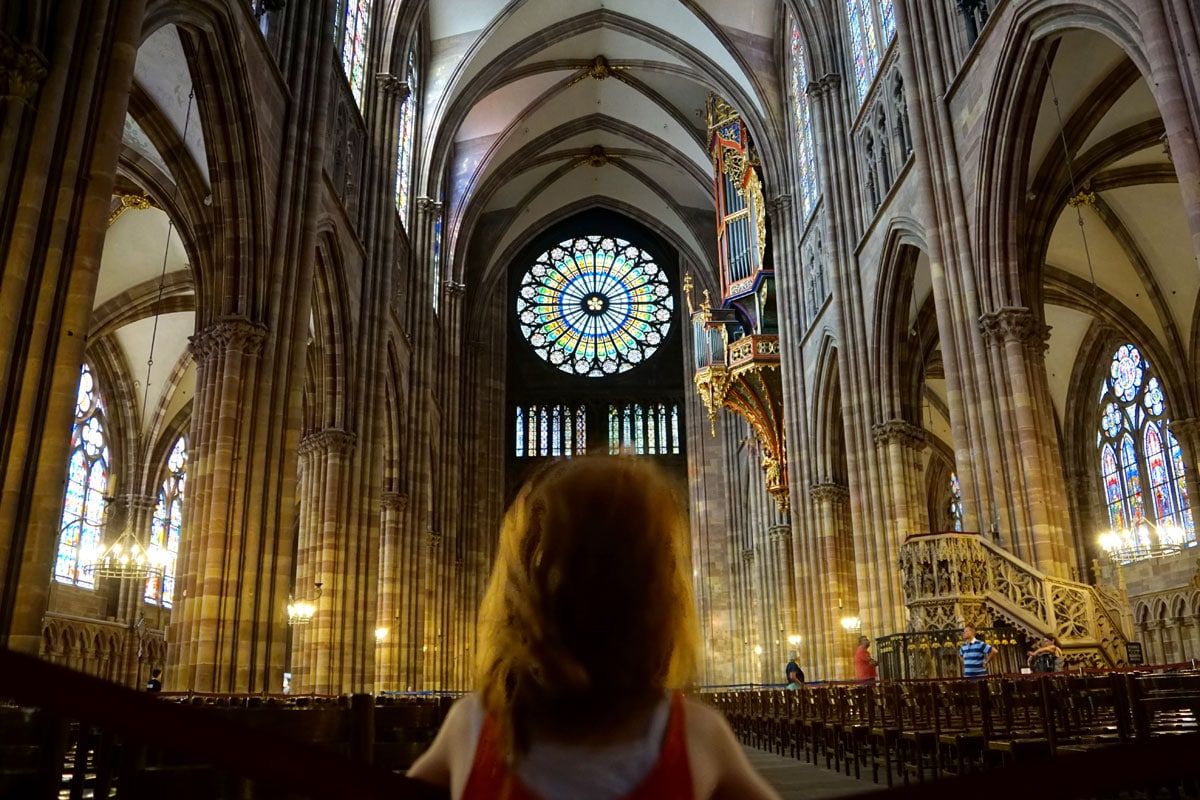
The stained glass window of the Virgin and the European flag
The stained glass window of the Virgin is located in the choir of the cathedral. It was donated in 1956 by the Council of Europe to replace the one that was destroyed during the Second World War. This stained glass window represents the Virgin Mary and incorporates the symbolism of the flag of Europe, which is composed of a circle of twelve gold stars on a blue background.
This flag was designed by Arsène Heitz, a painter from Strasbourg, as a symbol associated with the Virgin Mary after the vision of the Apocalypse according to St. John. The flag of Europe was adopted in 1956 by the Council of Europe on the feast of the Immaculate Conception (December 8), thus highlighting the choice of the Virgin Mary as a symbol of unity for Europeans.
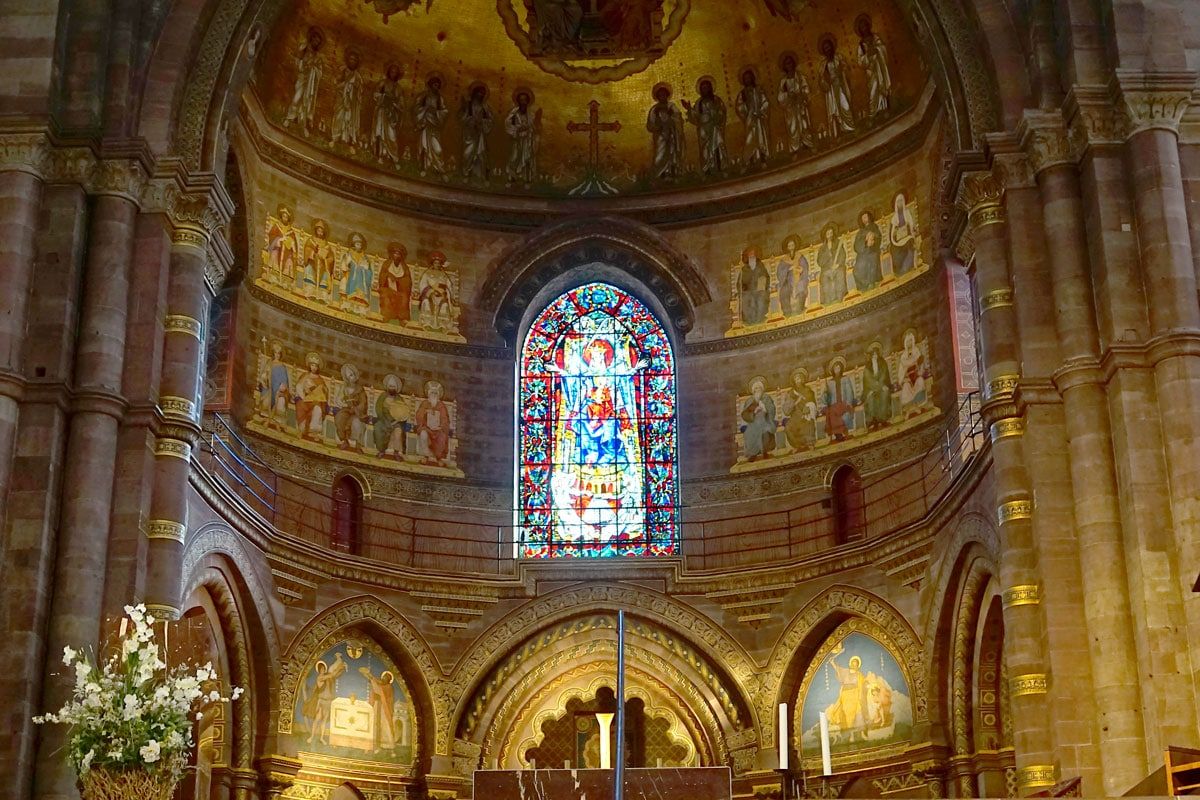
The Astronomical Clock
The other key element of the interior is the fascinating astronomical clock created in 1574 and a true masterpiece of Renaissance clock-making and mathematics. While it tells the time, it also indicates the position of the sun and moon, the holidays and the day of the week. Then every hour you can watch a magnificent mechanical ballet with the apostles parading before death.
The big show takes place every day at 12:30 with the animation of all the automatons. This show, accompanied by a film presentation of the clock, is not free.
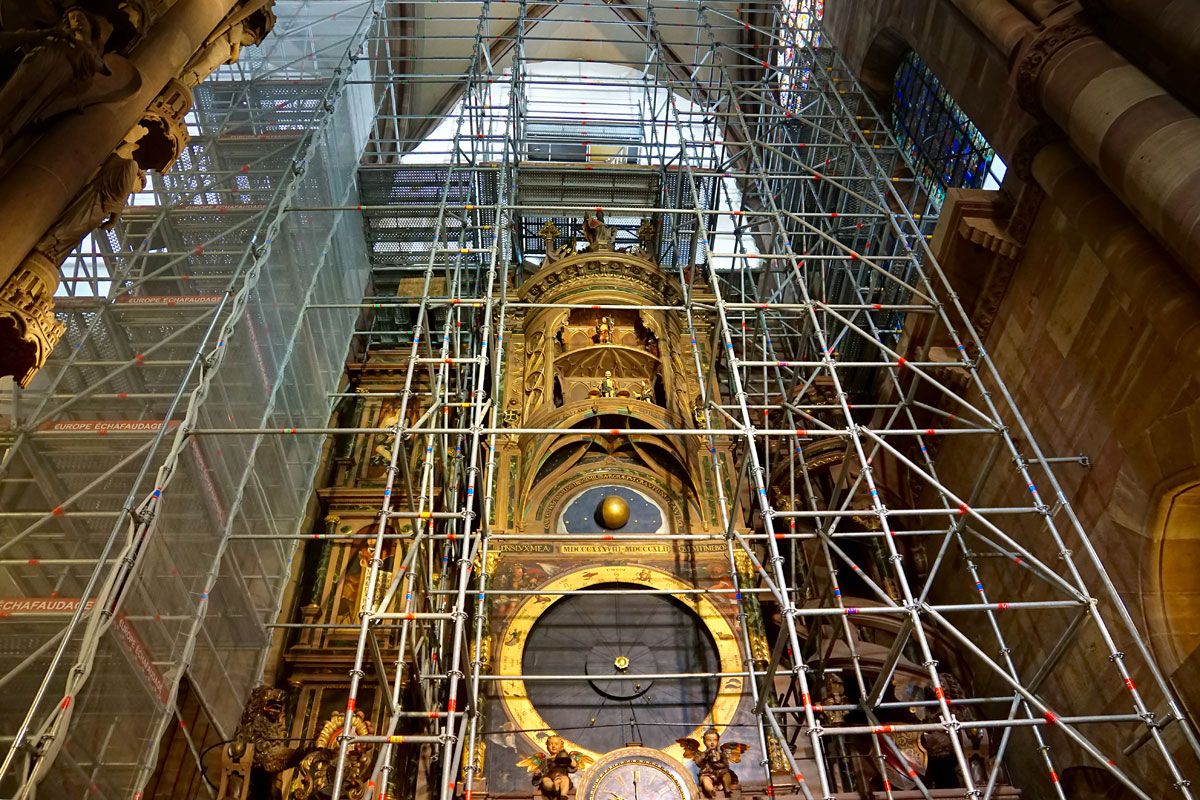

Strasbourg City Card - 7-Day City Pass
Explore Strasbourg with a 7-day city pass that offers discounted rates for attractions and activities. Climb up the Strasbourg Cathedral, take a guided walking tour, or visit the Château Vodou Museum.
The Pillar of the Angels
Right next to the astronomical clock, don't miss the magnificent Pillar of Angels. This decorative element is 18 meters high and has 12 statues. There are the 4 evangelists, 7 angels with trumpets and other musical instruments, and a Christ. If you look behind the pillar at the top of the chapel, you will see the man with the balustrade, a legendary and enigmatic character of the cathedral.
Climbing to the platform of the Cathedral of Notre-Dame and admire the view
The highlight of your visit is certainly the ascent of the cathedral to access its platform located at 66 meters high. After climbing 330 steps through narrow spiral staircases and crossing the guardians' house, you will have a breathtaking view of the roofs of Strasbourg, the city and the Alsace plain.
From up there, you can even live a unique experience by going back in time thanks to virtual reality and your smartphone. To do so, download the VR application Strasbourg Cathedral on the AppStore or Google Play and discover the city in 1490 to the west and in 1730 to the east. During the descent, you can admire the magnificent copper roofs of the cathedral.
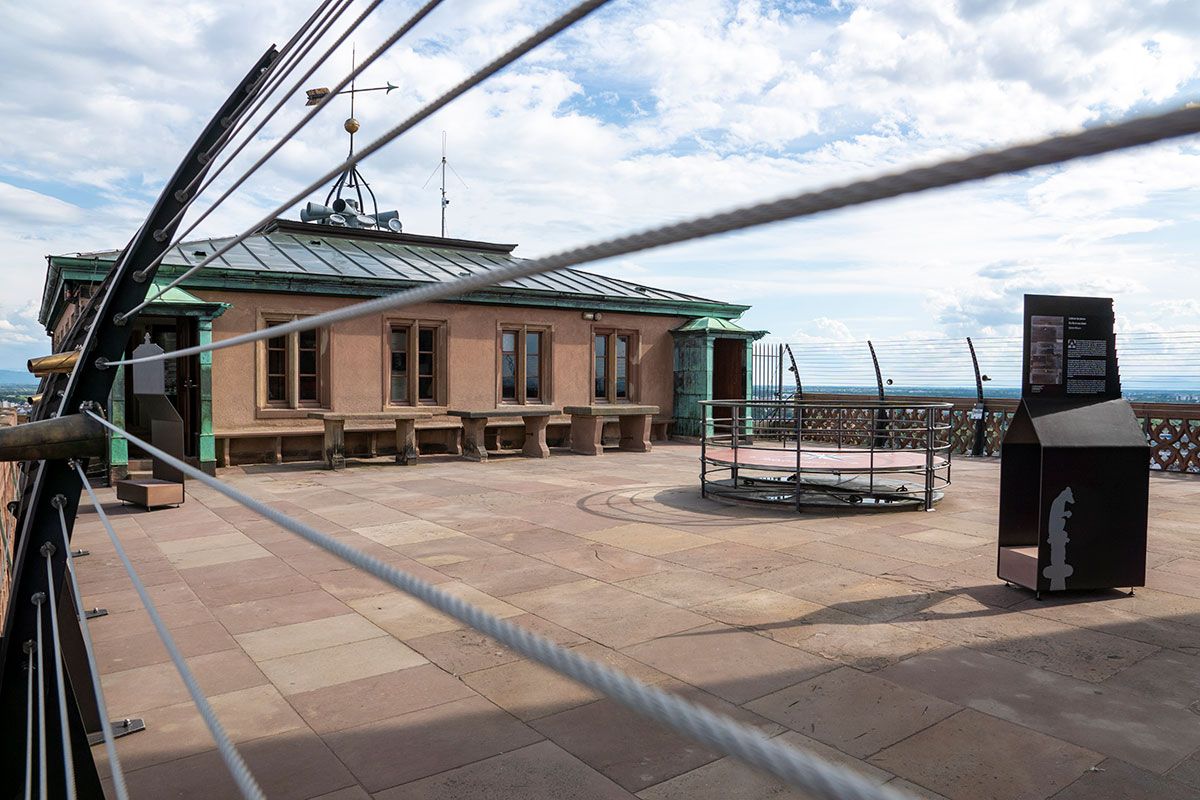
Unusual details of the Cathedral of Strasbourg
Strasbourg's Notre Dame Cathedral is full of unusual details to discover inside and outside. Here are some of them.
The Strongest Man in the Cathedral
If you stop by the stained glass windows and the second north pillar, you can see the Strongest Man of the Cathedral. This statue represents a bent character supporting the weight of the building on his back or with his stick. This sculpture is actually a recognition of the companions of Johann Knauth, the German architect who saved the Cathedral from collapse at the beginning of the 20th century, before being unjustly expelled from France at the end of the First World War. Without his consolidation work, it is possible that the Cathedral would be a pile of stones today.
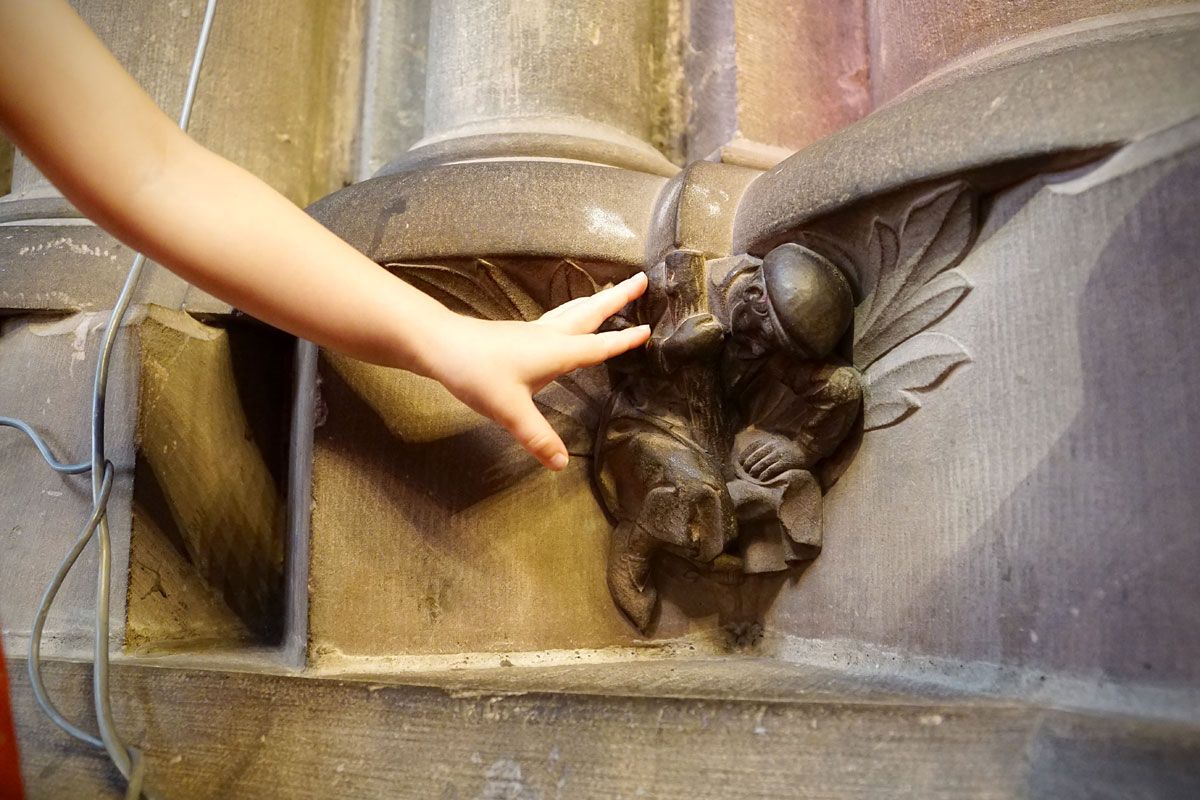
Geiler's dog
On the right side of the magnificent pulpit is a small carved dog. It pays tribute to the dog of the preacher Jean Geiler who, according to legend, always accompanied his master when he preached from the pulpit. It is said that petting the carving of this dog will protect your family and ensure that they will not lack for anything.
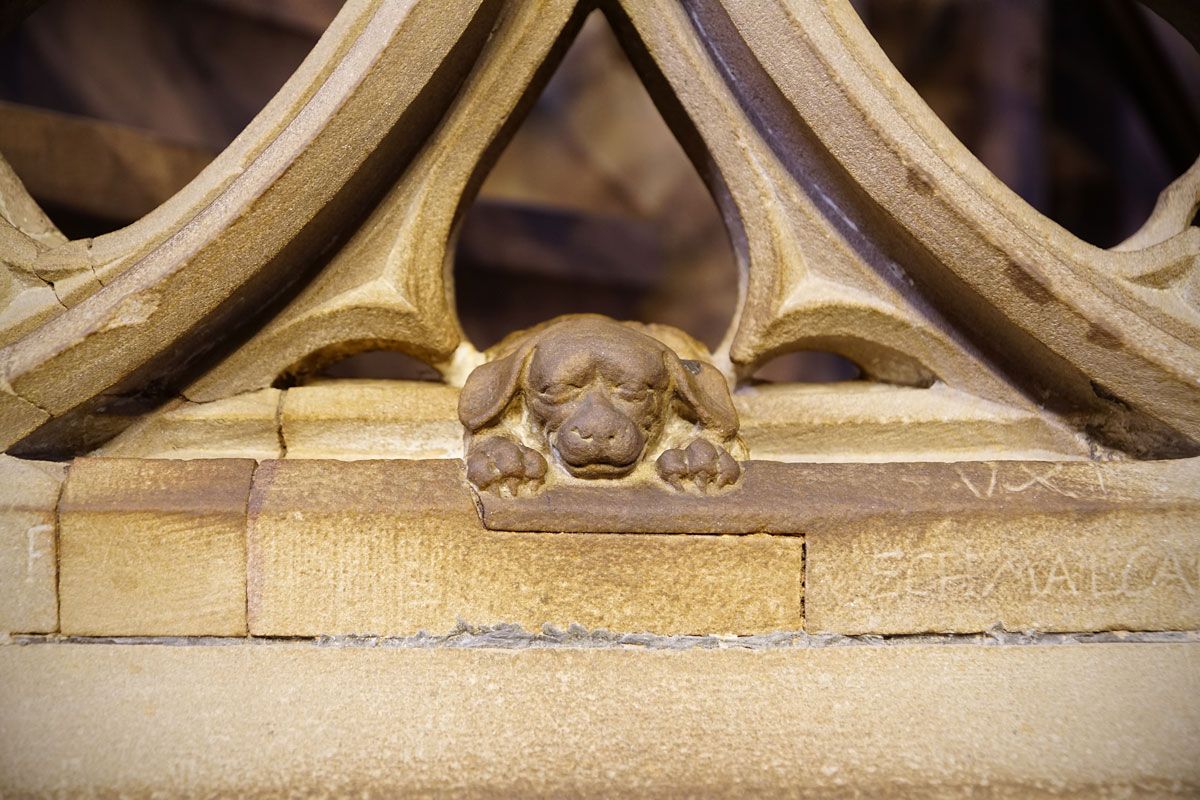
The green ray
Until 2022, a fascinating spectacle occurred twice a year: a green ray crossed the cathedral to illuminate the Christ on the cross on the pulpit of Geiler de Kaysersberg. This took place at 11:38 am on the day of the spring equinox (usually March 20) and at 12:24 pm on the day of the fall equinox (September 22 or 23).
The phenomenon lasted about 15 minutes and attracted many visitors. Unfortunately, following restoration work on some stained glass windows, this unusual phenomenon has disappeared. However, it remains a memorable souvenir for those who had the chance to see it.
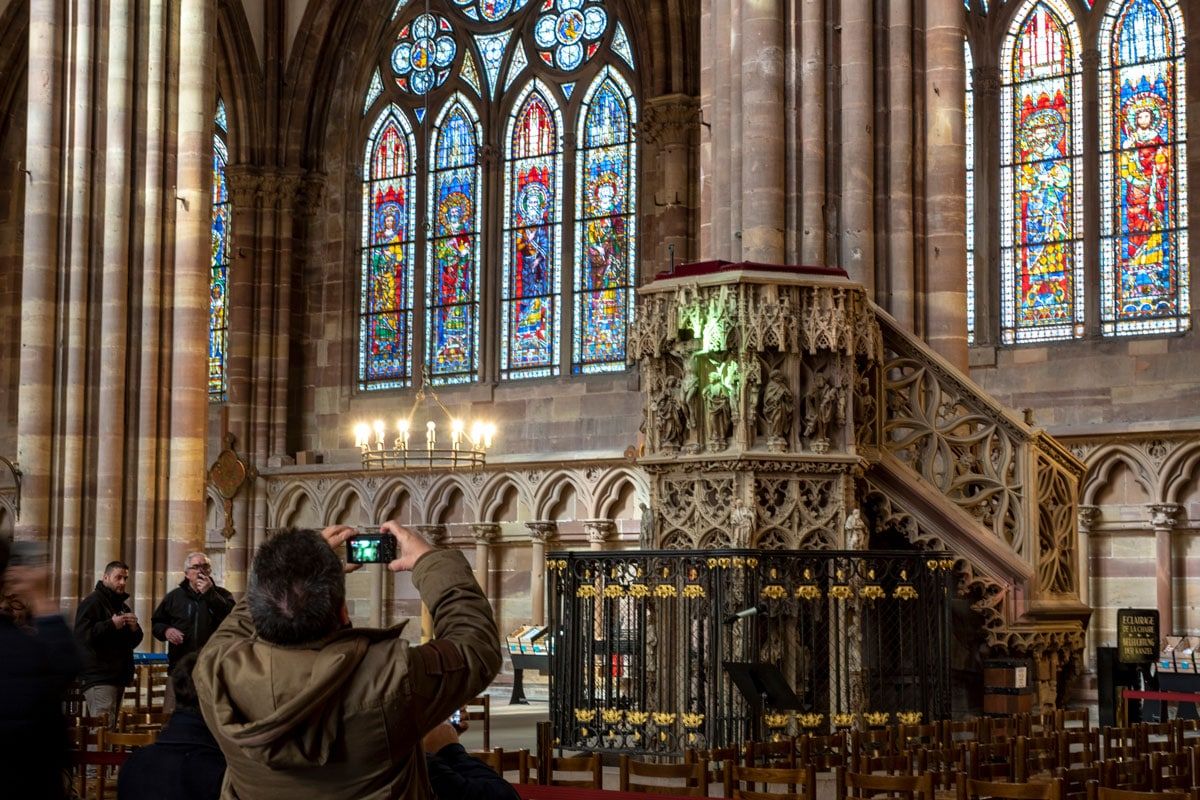
Cathedral windows saved by the Monument Men
During World War II, the stained glass windows of Strasbourg Cathedral were stolen by the Nazis and recovered by the "Monuments men". Most of these 12th and 13th century stained glass windows had been removed and stored in two castles in the Dordogne, but the Germans recovered them and stored them in a salt mine before the liberation of Strasbourg. Alsatians recovered these treasures in September 1945 and brought them back to Strasbourg.
Camille Cul nul
There are many characters carved on the central door of the Strasbourg cathedral. If you are waiting in line to enter, take the time to look for "Camille le Cul Nu" (Gamil Blosarsch). To find him, look at the Virgin and go up to the pot at the top left. At the bottom of this pot, you'll see a pair of outstretched buttocks. While this detail is funny, its origin is much less funny. In fact, this part symbolizes the gates of hell with Judas, Satan, Adam, Eve and Camille. According to legend, Camille was a bishop who abused his altar boys.
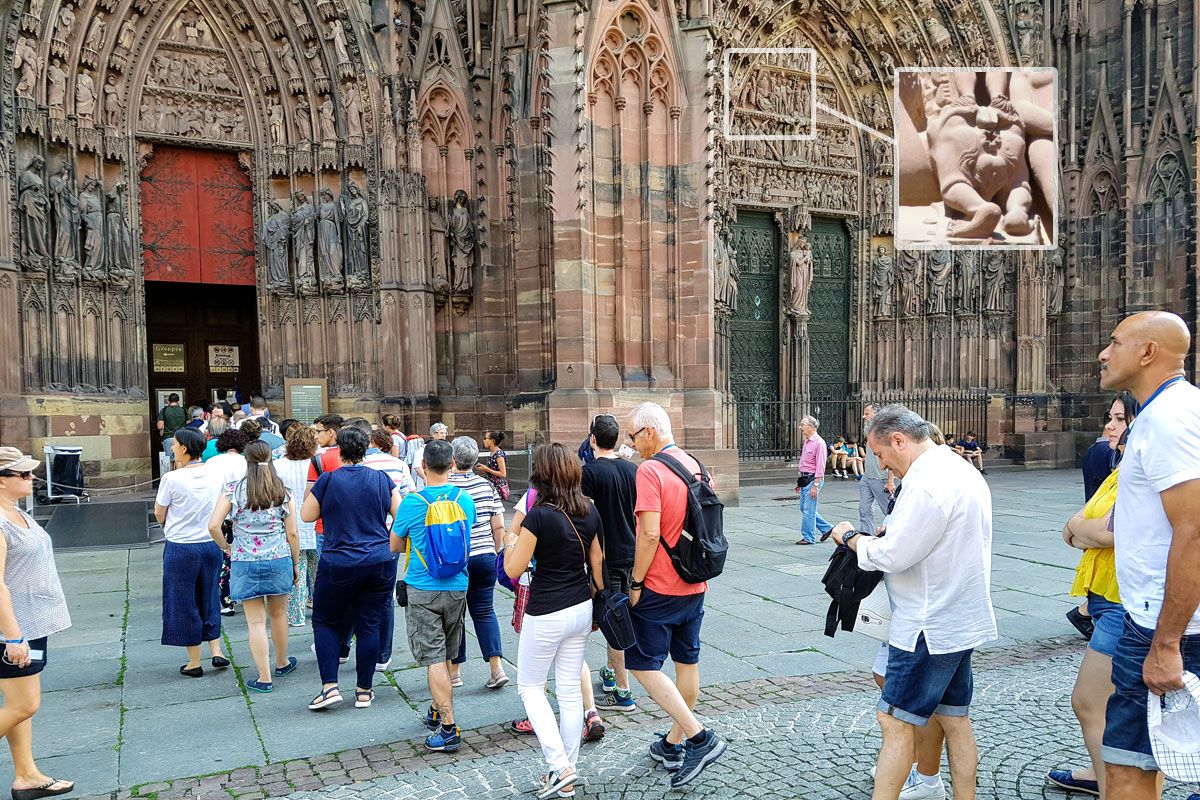
Seeing the second spire of the cathedral
The cathedral of Strasbourg is known for its one tower. The second spire was never built... but there's a very specific place in the rue Mercière where you can make it appear as if by magic. Go to the window after the store "Reflets d'Alsace" then crouch down and admire! It's quite a surprising but photo-worthy spot ;)
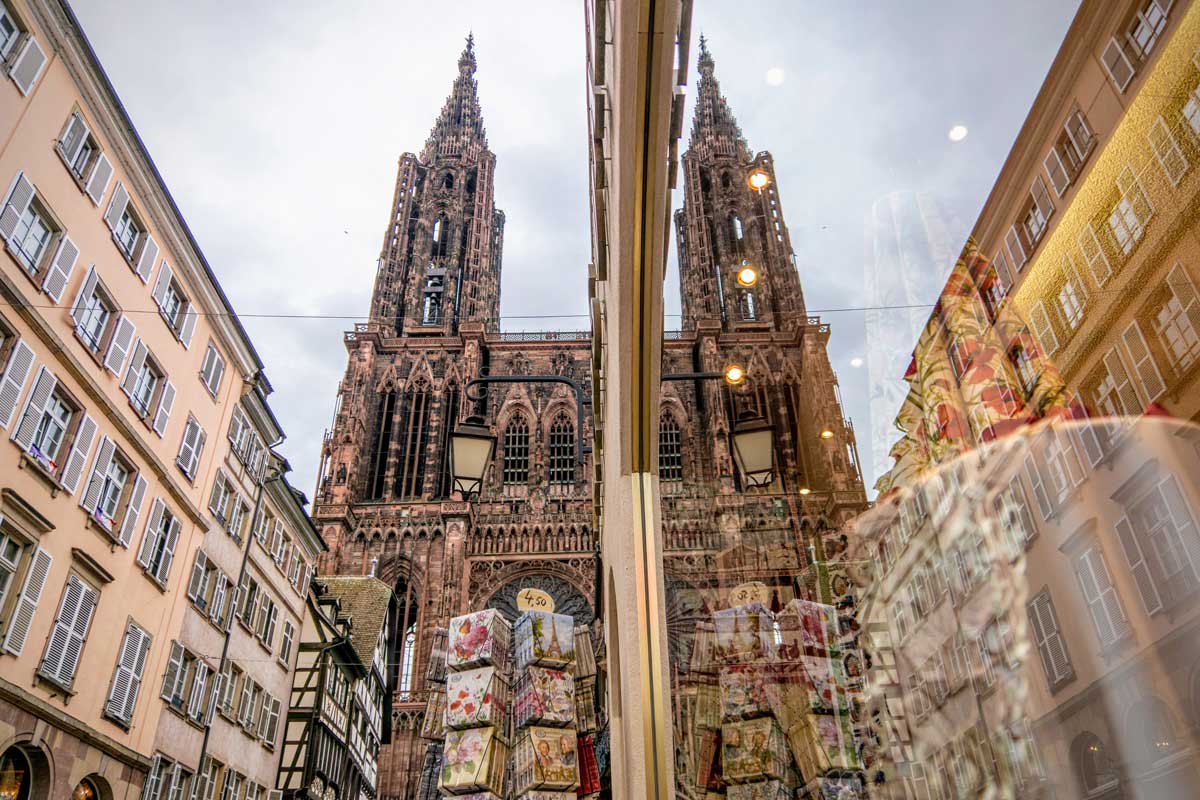
Visiting Musée de l'Œuvre-Notre-Dame
Near the cathedral is the Musée de l'Œuvre-Notre-Dame. I invite you to visit it to extend your visit. You will discover collections of sculptures, paintings, altarpieces, tapestries and stained glass from Strasbourg Cathedral and other churches in the region. You can also experience climbing the cathedral's spire through virtual reality.
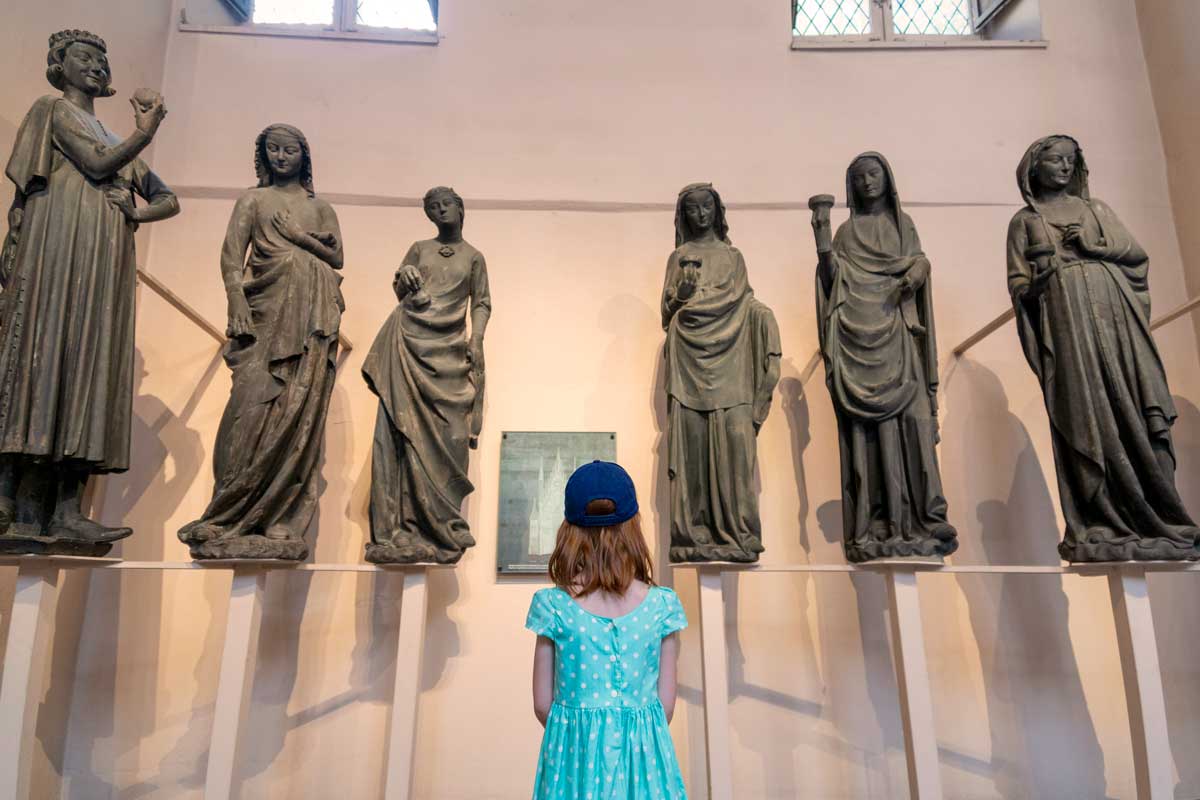
What's Strasbourg cathedral's height ?
The cathedral of Notre-Dame de Strasbourg is 142 meters long and 43 meters wide. It is one of the largest Gothic cathedrals in Europe.

